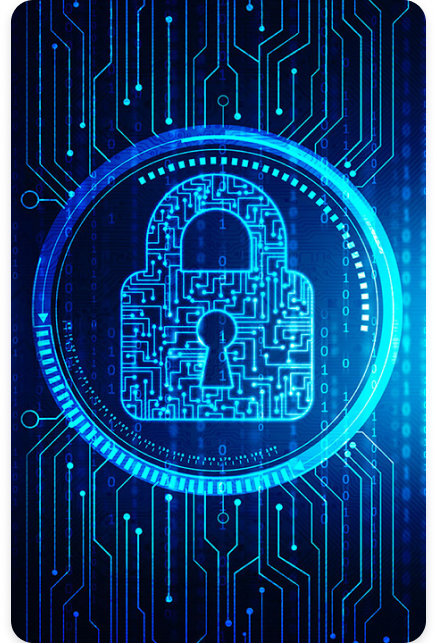Secure the Extended Enterprise
Security is in our DNA.
Overview
Cybersecurity is the practice of defending computers, servers, mobile devices, electronic systems, networks, and data from malicious attacks. It’s also known as information technology security or electronic information security.
Defense in depth is a strategy using multiple security measures to protect the integrity of information. This way of thinking is used to cover all angles of business security – intentionally being redundant when necessary. If one line of defense is compromised, additional layers of defense are in place to ensure that threats don’t slip through the cracks. This method addresses the security vulnerabilities that inevitably exist in technology, personnel, and operations within a network.
Today’s cyberthreats are rapidly evolving. Defense in depth is a solid, comprehensive approach to utilizing a combination of advanced security tools to protect critical data and block threats before they reach their endpoint. Endpoint protection, including antivirus and firewalls, are still instrumental elements of complete security. However, a defense in depth strategy is rising significantly, as these methods of network security alone are no longer enough. The concept of defense in depth takes cybersecurity a step further by acknowledging the macro controls needed for ultimate protection, including physical, technical, and administrative aspects of the network. These three controls build the architecture of a defense in depth strategy:


Physical Controls
The security measures that protect IT systems from physical harm.

Technical Controls
The protection methods that secure network systems.

Administrative Controls
Internal employee policies and procedures.
Why Choose Security?
Over the past decade, criminals have been able to seize on a low-risk, high-reward landscape in which attribution is rare, and significant pressure is placed on the traditional levers and responses to crime. In the next 10 years, the cybersecurity landscape could change significantly, driven by a new generation of transformative technology.
To understand how to secure our shared digital future, we must first understand how the security community believes the cyberthreat will change and how the consequent risk landscape will be transformed. This critical and urgent analysis must be based on evidence and research and must leverage the expertise of those in academia, the technical community, and policymakers around the world.

Why Work With Us?
There are many facets to consider when exploring security as a service solution and it can be very confusing to figure out who is going to be the right cybersecurity partner for my company. We understand this and have helped other companies like yours weave their way through this complex process.
Our company has reach and depth, tenured engineers and facilitators, and a deep bench of proven experience-based knowledge. We can help you assess your current state and identify potential cybersecurity companies that will be the right fit for your organization.
Is Security Right for My Organization?
Each second, more than 77 terabytes of internet traffic takes place online. As such, the internet has become a digital Silk Road that facilitates nearly every facet of modern life. And, just as ancient merchants were sometimes beset by bandits on the actual Silk Road, today’s entrepreneurs can easily find themselves under attack from cyber malcontents working to derail companies through theft and disruption.
In recent years, headlines have spotlighted crippling cyberattacks against major corporations. While each corporate cyberattack resulted in millions of dollars in damages, most stories fail to mention the many data breaches that affect much softer targets: small businesses.
According to Verizon’s 2019 Data Breach Investigations Report, 43% of breaches impacted SMBs. You may not know when the next attack could occur, but taking proper precautions can hamper or completely overthrow a hacker’s attempt at gaining access to your network. To help you avoid the mistakes of Target and, most recently, more than 20 government agencies, we’ve compiled info on why your SMB could be at risk and how to avoid a similar fate.


Things to Consider
Keep your software up to date. Hackers are constantly scanning for security vulnerabilities, and if you let these weaknesses go for too long, you’re greatly increasing your chances of being targeted. Educate your employees. Teach your employees about the different ways cybercriminals can infiltrate your systems. Advise them on how to recognize signs of a breach and educate them on how to stay safe while using the company’s network.
Implement formal security policies. Putting in place and enforcing security policies is essential to locking down your system. Protecting the network should be on everyone’s mind since everyone who uses it can be a potential endpoint for attackers. Regularly hold meetings and seminars on the best cybersecurity practices, such as using strong passwords, identifying and reporting suspicious emails, activating two-factor authentication, and clicking links or downloading attachments. Practice your incident response plan. Despite your best efforts, there may come a time when your company falls prey to a cyberattack. If that day comes, it’s important that your staff can handle the fallout that comes from it. By drawing up a response plan, attacks can be quickly identified and quelled before doing too much damage.
